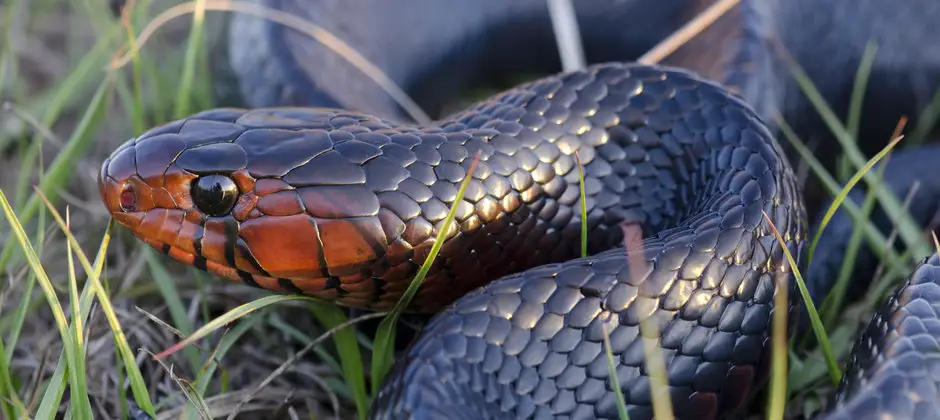
What I hope you take away from this brief article is the ability to identify a Blue Indigo from a distance.This way you can squash a little of the fear involved in seeing a 6+ foot “Nope Rope” slithering around your property. Blue Indigo snakes are born at an astonishing 14-16 inches in length! As I mentioned above, these are large snakes and this correlates directly to the size of their offspring. The females will find an abandoned den and lay a single clutch of 3-12 eggs. Mating occurs from October to February with egg laying taking place in May and June. The Texas Blue Indigo like most snake species, is an egg layer. The entire snake will maintain the beautiful iridescence throughout. The belly of the snake will be a grey-blue hue transitioning to a salmon or cream color with dark stripes as it nears the head, sometimes all the way up onto its cheeks. This is a dead giveaway that you have found a Blue Indigo. If the snake is moving, it almost appears there are small blue tinted rainbows radiating across its smooth and glossy scales. The most notable of these is the brilliant iridescent glow the snake is named after. But lets get into a little more of the specific characteristics that set this snake apart. Its hard to miss a giant black snake averaging close to 6 foot in length. The first thing most people notice is unsurprisingly the size. Thankfully, the Blue indigo is one of the easier species to identify. If you are looking to keep the dangerous and possibly deadly local snakes away from your home and family, this is the last snake you want to kill! How do I identify a Blue Indigo? The Texas Blue Indigo will kill and eat every Venomous species of snake found in Texas. They have another food source that makes them very beneficial to keep around. While Blue Indigos will feed on many of the same small mammals, Birds, Reptiles and Amphibians that other local snakes eat. The Blue Indigo uses its massive size (commonly 6-8 foot in length) and overwhelming strength to kill their pray using brute force and their powerful jaw strength. This is an important fact as unlike most non-venomous snakes in North America, the Blue Indigo snake is NOT a constrictor. It is one of the largest snakes in North America, smaller only than the rarer and protected Eastern Blue Indigo found mainly in Florida and Georgia. The Texas Blue Indigo (Drymarchon melanurus erebennus) is a Protected non-venomous snake native to Texas and portions of Mexico. So for those of you who asked and I was unable to get back to in a timely manner… this brief article is for you. It didn’t take long to realize that few people had ever seen one in person, yet alone know anything about them.

After posting a few photos and a short video, my message box was inundate with questions about the stunning specimen. Recently I came across a Texas Blue Indigo snake on my ranch.

Lets talk snakes! Specifically, the Texas Blue Indigo!


 0 kommentar(er)
0 kommentar(er)
